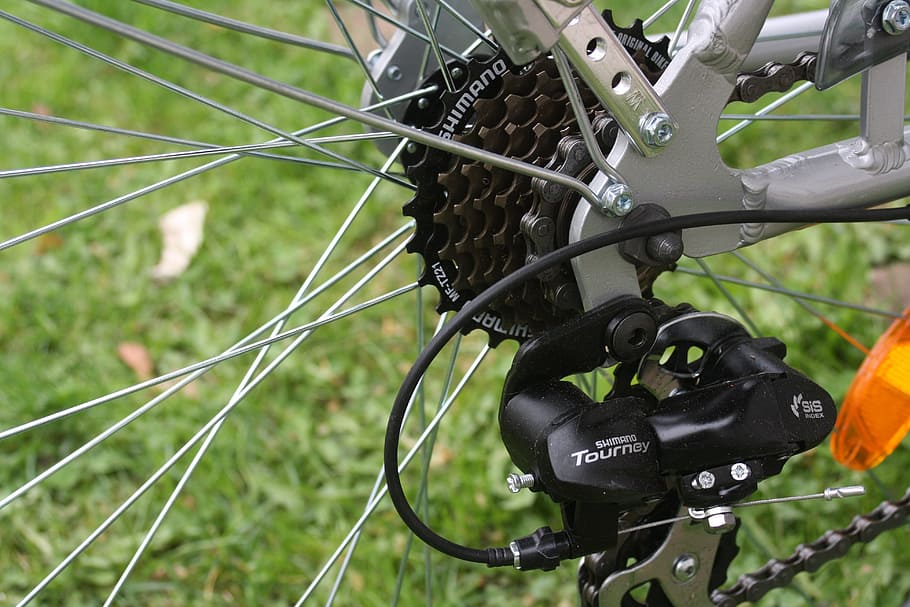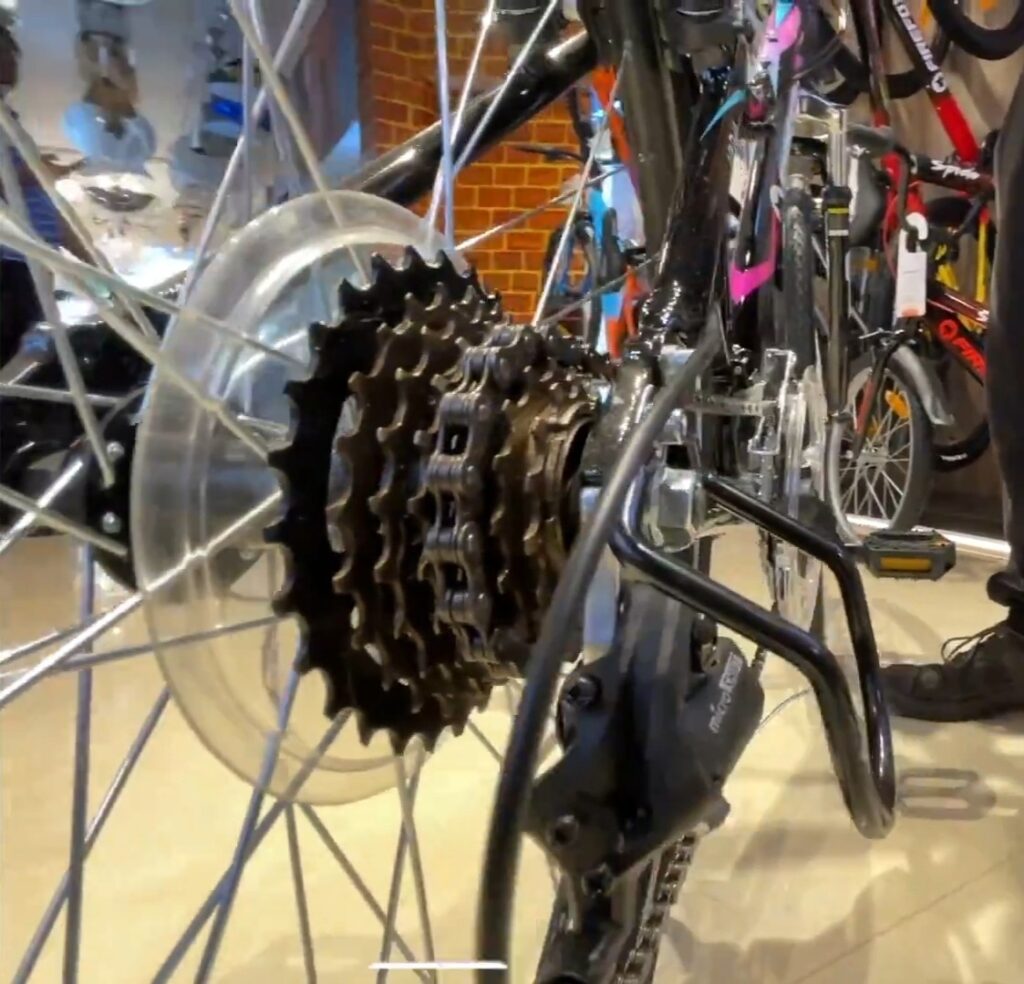Cyclify India is reader-supported! We may receive an associate commission if you purchase through one of the Amazon Associate links on this page! Continue Reading…
There comes a time in every cyclist’s life when they find themselves thinking, “Just how do bicycle gears work?”
Though it appears to be a somewhat complicated system, the way gears work is actually quite simple.
If you don’t ride a single-speed bike, you need to be familiar with the inner workings of your bike’s gears.
We’ll go through the following to get you up to speed with your bike’s gears:
- Why Are Gears Required on Bikes?
- How to Use the Gears on Your Bike
- How Do Cycle Gears Operate?
Are you all set to go?
Now let’s get going!
Table of Contents
Why Are Gears Required on Bikes?

Many people may find this query absurd, yet considering that single-speed bikes exist, it’s probably a legitimate one.
Why even bother with gears if other bikes have none at all?
That depends, of course, on the kind of riding you’re doing. A single-speed bike will work quite well over flat, rather smooth terrain. To keep your speed consistent, you need to provide a rather steady amount of power.
But things become interesting when you add in some hills or other uneven terrain.
Regardless of the terrain, one of the golden laws or tips of cycling, especially road riding, is to attempt to maintain a generally steady pace during your trip.
Recall that your cadence (or the revolutions per minute) is the number of times you turn the pedals in a specific amount of time.
This isn’t feasible on a single-speed bike in a mountainous environment. You cannot possibly maintain the same cadence while ascending as you can when descending.
On the other hand, gears let you change into a higher gear for descent and a lower gear for ascent. This should allow you to maintain a fairly steady cadence for the duration of your ride because you have a sufficient variety of gear ratios.
Naturally, this isn’t always the case. A strong ascent with some 30% slopes makes it challenging to maintain a high tempo without blowing your doors off right away.
It’s crucial to remember that shifting gears should only alter your speed—not your cadence.
Read More: Difference Between Gear or Gearless Bicycle: Which is Better?
How to Use the Gears on Your Bike?

It’s possible that you already know how to operate the gears on your own bicycle if you possess one.
It’s obvious what the solution is: the shift levers are used to change gear. However, how are the shift levers operated?
This topic is a little uncomfortable because there isn’t a simple answer; instead, it relies on the brand & the kind of gearing you have.
There are two common locations for shift levers on bicycles. Either either on the handlebars (typically as part of the brake levers) or the downtube (also known as “downtube shifters”).
Depending on the brand of handlebar shifters you have, it will vary. For instance, Shimano shifters may be moved in one direction with a separate lever, and in the other way, they can be moved by pushing the entire shifter system inward.
SRAM shifters require only one hand to operate. In this instance, shifting in one way requires pushing the paddle inwards a lot, whereas shifting in the opposite direction requires pushing the paddle inwards very slightly.
In addition, SRAM invented “twist-grip” shifters, which are still well-liked by mountain cyclists.
Another difference with Campagnolo is that you may shift in one direction by pushing the lever inwards, and in the opposite way by using the separate “thumb paddle”.
However, there is really just one method to use downtube shifters, despite some subtle differences.
Gear changes are as smooth as possible thanks to the “click” of indexed downtube shifters. To shift into a harder gear in this situation, simply press the lever “up” toward the handlebars and “down” toward the bottom bracket.
In the event that they are not indexed, the procedure remains unchanged; however, you must apply gentle pressure until you sense a shift in gear, followed by lifting the lever.
How Do Bicycle Gears Work?
Changing Gears

Alright, now here’s the crucial query: in particular, how do bicycle gears work?
There are basically seven bicycle components that make up a bike gear. These include the front and rear derailleurs, shifters, cables, cassette (rear gearing), and chainset (front gearing).
A cable attached to the shift levers holds the derailleurs in place while springs push them in one direction.
To move the derailleur in or out, the rider must pull or release the shift levers, applying or releasing stress on the cable.
Based on whether you switched the front or rear gears, the “shifted” derailleur will then pull the chain, which passes through both derailleurs and rests on the cassette & chainset’s sprockets and chainrings, onto a new sprocket.
Here are the Front and Rear Derailleurs adjusted!
Read More: How to Shift Gears on a Bicycle?
The Mechanical Advantage and Gear Ratios
However, what impact does shifting the chain’s sprocket or chainring have on the force required to turn the pedals?
It is made possible through a phenomenon known as mechanical advantage. In essence, this is how a lever would work in terms of rotation. It depends on the gear you’re in and how much force you need to apply to the pedals.
Different-sized sprockets or chainrings (also called “cogs”) are used together to make this work. We’ll provide an example to clarify the precise process through which this operates.
Let’s pretend you’ve set your road bike up with the highest feasible gear ratio, which allows you to use a rear sprocket with 11 teeth and a chainring with 53 teeth.
It is important to keep in mind that the teeth are uniform in size and the chain is nearly stiff. If you advance the chainring by one tooth, the rear sprocket will advance by the same amount.
The chainring rotates with the pedals when you fully turn them. It indicates that for every pedal revolution in our case, the chain advances 53 teeth.
The back sprocket needs to spin 53 teeth since, as we all know, the chain is stiff and the teeth are all the same width.
Approximately five complete sprocket revolutions are represented by this on an 11-tooth sprocket. In one direction, the wheel may move freely while the cassette stays immobile, while in the other, the cassette, which holds the sprockets, is fixedly attached to the wheel.
Therefore, the rear wheel and, consequently, the front wheel likewise revolve approximately five complete times when the cassette rotates.
Assume you change to a 39-tooth sprocket at the front. At this point, the chainset only spins once when you fully rotate the pedals. But as of right moment, the chain can only advance 39 teeth.
The wheels and cassette have only completed somewhat less than 3.5 full rotations at this point.
Assume you are riding on 700c wheels. In that case, 3.5 revolutions would only cover 2.45 m, but five rotations would cover around 3.5 m.
You are now traveling at a slower pace for the same cadence, having traveled a different distance with only one pedal turn.
Everything You Need To Know About Bike Gear Ratios, Complete With A Calculator
Why Is It Easier Or Harder To Pedal Depending On The Gear Ratio?
You may adjust your speed for a specific cadence by switching gears, as we have shown.
However, why does pedaling seem harder when you move a different distance while maintaining the same pedal rotational speed?
To put it mildly, the scenario may be oversimplified to mean that more effort is needed since you are “dragging” the same weight a greater distance in the same period of time.
But in practice, things are a little more complicated.
You have to apply more effort to the pedals in order to accelerate. However, in the ideal scenario, where there is no drag, you would really maintain a steady speed without having to use any pedal force.
Of course, you constantly feel dragged, nevertheless. In order to overcome the drag caused by air resistance, you must apply more effort to the pedals. In general, air resistance changes with speed.
Following a gear change, you encounter more air resistance as you accelerate. Consequently, you must use greater pedal power to offset this resistive force.
Changing to a higher gear increases resistance to pedal rotation because you must apply more energy to the bike’s pedals to maintain forward momentum.
Read More: Gear or Gearless Cycle for Weight Loss?
Conclusion on How do Bicycle Gears Work?
I hope you like this article on How do Bicycle Gears Work, In summary, bicycle gears offer a mechanical advantage that enables riders to stay on course and maintain a consistent pace even on uneven terrain.
To generate different gear ratios, shifters and derailleurs move the chain between cogs and chainrings of differing sizes. Lower gears make pedaling simpler for accelerating or ascending, whereas higher gear ratios need more pedal energy but cover more ground every cycle.
It takes some effort to become proficient with your particular shifter type and to smoothly shift gears. However, knowing how to shift gears offers you the adaptability to ride both flats and hills at the ideal cadence for your legs.
You can ride more quickly, further, and effectively if you have the appropriate gear for the riding circumstances.
Read More:
Frequently Asked Questions on How do Bike Gears Work?
1. What is the average number of speeds on a contemporary road or mountain bike?
The majority combine chainrings and cogs to create between 18 and 27 gears. Road bikes typically have 9–11 gears and 2-3 chainrings. Up to 12 gears and three chainrings are common on mountain bikes.
2. When is the right time to downshift?
To keep moving forward, shift down before facing sluggish and steep inclines. It is simpler to pedal in lower gears.
3. When should I change gears to a higher gear?
When accelerating or descending quickly, shift into higher gears. With higher gears, you can pedal farther with each stroke.
4. How can I gently swap gears?
Gently depress the pedals, change into a new gear, and then smoothly apply pressure again. Don’t make sudden, violent changes.


0 Comments